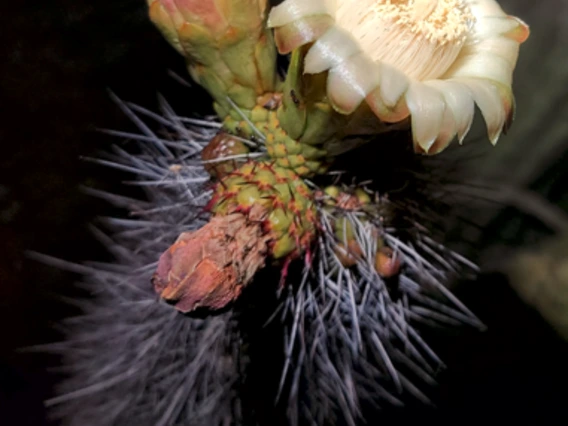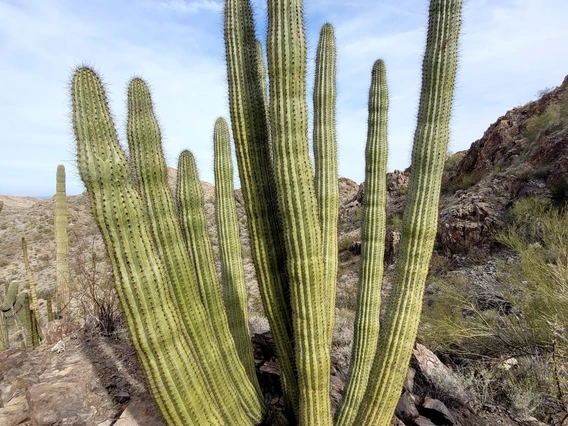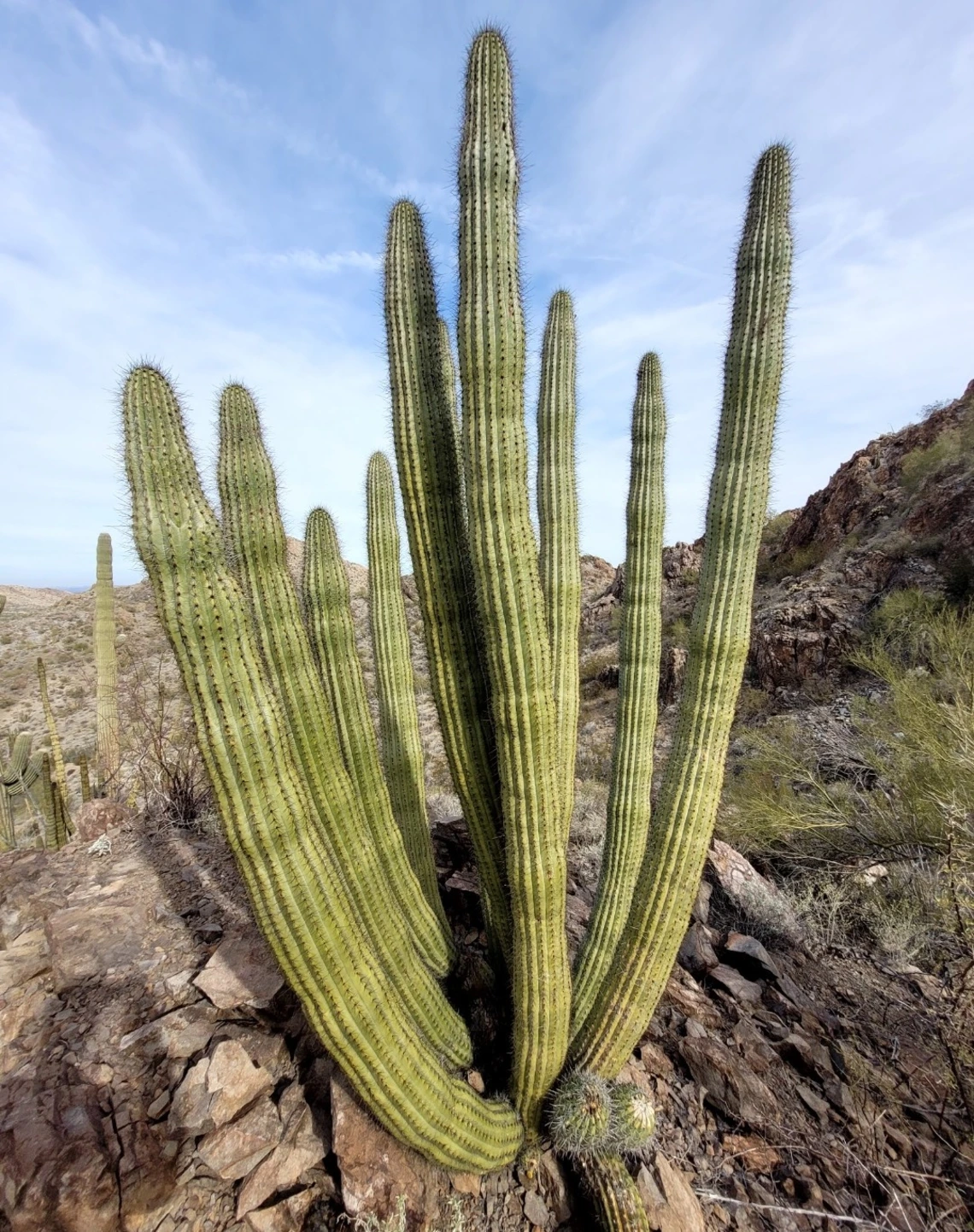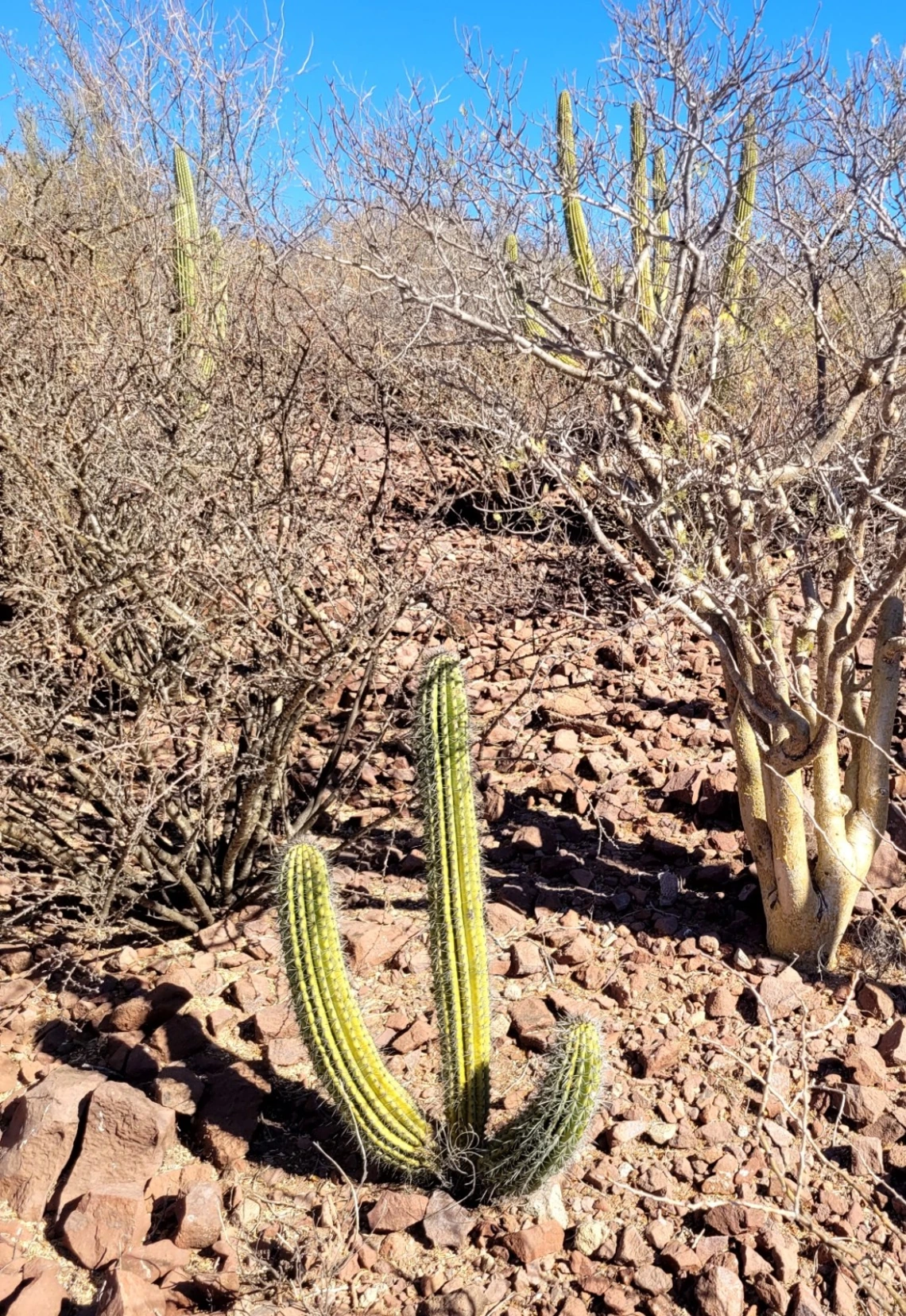Family: Cactaceae
Compound: Ste thu
Synonyms: Cereus thurberi, Lemaireocerus thurberi, Marshallocereus thurberi, Rathbunia thurberi
Geographic Origin: southern AZ, northwestern Mexico
Characteristics: A large, many armed cactus that can grow up to 4.5m (15ft). Its large, olive-green stems emerge from a woody base, and have ~12-20 ribs that run the length of the stem. The trunk, which is usually hidden by the clustered arms, can approach 0.6m (2ft) in diameter and become quite woody. Each stem is usually 15.2-20.3cm (6-8in) in diameter, but some can get nearly 30cm (12in) in diameter. Flowers are creamy white, and similar to Saguaros in appearance, though they are slightly smaller. They only open during the night and stay open until the early morning. Fruits are a vibrant red, and split when mature, exposing red, seed filled flesh just before the summer rains. The plants’ overall shape loosely resembles the clustered pipes of a pipe organ, giving it its name.
Natural History: Grows in sandy flats to rocky slopes between 304-1066m (1,000-3,500ft). This plant is sensitive to cold, and its range is limited by frost and freezing temperatures. The structure of this plant provides shelter for animals and shade for smaller plants. Small woodpeckers excavate cavities in the arms and use them for shelter and nesting. The flowers are visited by many pollinators and the fruit are a vital food source for desert wildlife.
Cultivation Notes: Easily grown from seed or cuttings. The organ pipe cactus is a semi-hardy plant, only able to withstand temperatures as low as -3.9C (25F). New growth is especially vulnerable to cold weather. Many people who grow this plant in cooler areas place Styrofoam cups upside down on top of the growth points to protect from short dips below their temperature tolerance. This plant does not need regular watering, but doing so in the summer can add an additional foot of growth per year. Placing an organ pipe cactus in full sun is best for growth as well, but it must be acclimated to these conditions if purchased from a grower who was growing them in shade. It should also be noted that the side of the plant that was facing south in its original growing location should be marked so that it can be positioned facing the same way in its new location.
For general cactus and succulent propagation information, click here
Ethnobotany: Tohono O'odham and other peoples have harvested the fruits of this cactus for centuries. Extremely sweet and juicy, the fruits have a flavor that is similar to watermelon. They can be prepared in many ways to make jams, fruit leather, syrups, juice and wine. The mashed seeds of the fruit produce an oily paste that can be used similarly to butter. The Comcaac used the cortex and pith of the dry cactus mixed with animal fat to make a tar-like caulking compound, often used on boats. Ribs from the organ pipe were used to make cooking utensils, torches, fuel, hunting shelters, and for the framework of various forms of houses. The best landscape use for the organ pipe cactus is for individual display in transition and outer zone landscapes. The cactus requires little to no maintenance.
Citations:
Anderson, Edward F. The Cactus Family. 1st ed., Timber Press Incorporated, 2001.
National Park Service, Organ Pipe Cactus -- Retrieved September 27, 2018
Felger & M.B. Moser. 1985, reprinted 1991, 2016. People of the Desert and Sea: Ethnobotany of the Seri Indians. University of Arizona Press, Tucson. 480 pages.
SEINet Arizona – New Mexico Chapter. Retrieved June 22, 2024.











